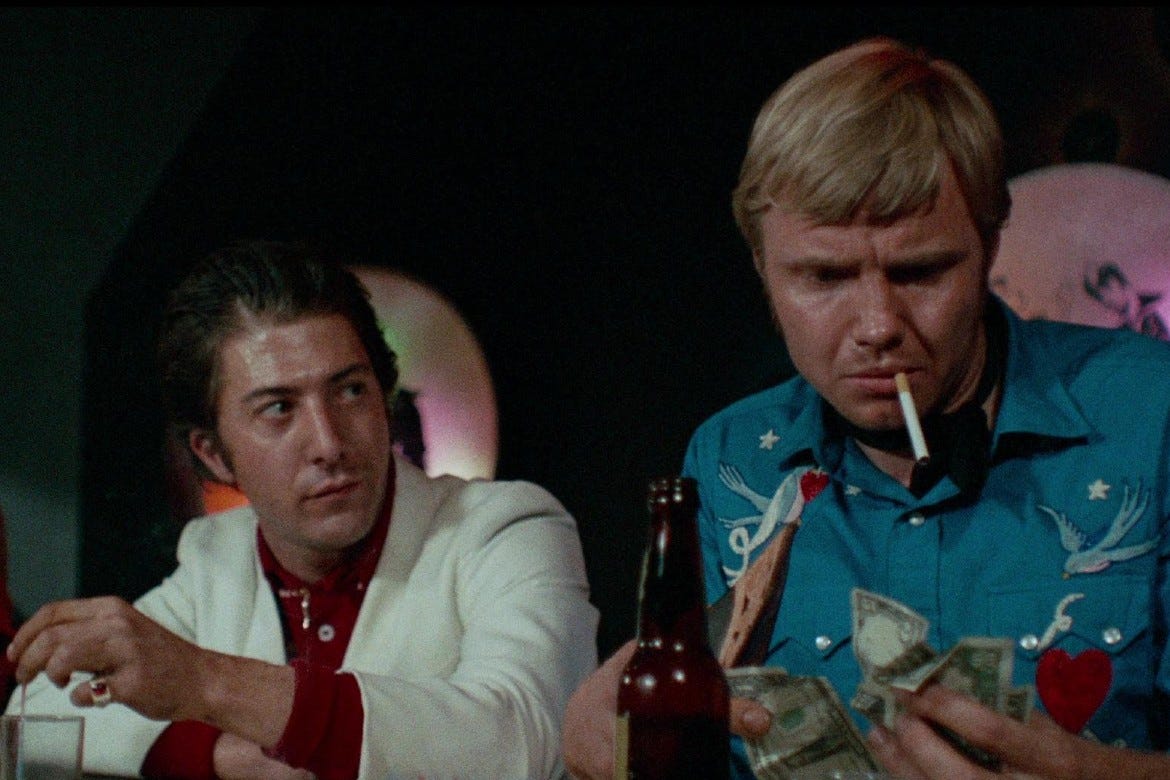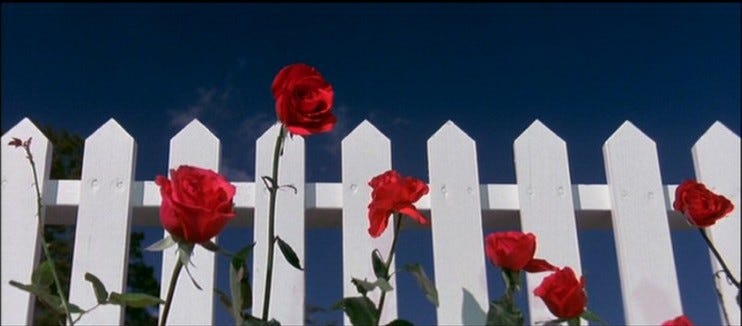Fast days, slow company
Summer recs, reviews, and revelations
Future installments of gen yeet will be partially paywalled since I have gone freelance! Subscribers will receive twice-monthly posts, including excerpts from in-progress essays, reviews, miscellaneous writings, and my personal journal.
If you can’t afford to subscribe, email me and I can a) comp a subscription or b) share individual posts. If you’d rather donate to me directly (Substack takes 10% of subscription revenue), you can Paypal or Venmo with your email, and I’ll add you to the subscriber list.
“No one likes to be confronted with a bunch of disparate details that God only knows what they mean … But perhaps if the details are all put together, a certain pulse and sense of place will emerge, and the integrity of empty space with occasional figures in the landscape can be understood at leisure and in full, no matter how fast the company.” Eve Babitz, Slow Days, Fast Company (1977)
Like most writers, I think often about memory—the fact and fiction of the matter of remembering. I’ve recently told various people in my life that I think memory is the true fiction, a phrase cribbed from Barbara Guest’s essay, “Poetry, the True Fiction,” who herself had borrowed it from Wallace Stevens. (“Notes on a Supreme Fiction” is a gorgeous poem with gorgeous lines, like It is the celestial ennui of apartments !!!) What details do we remember, and what do we forget? A subjective version of the past only exists in our heads, unless it is, of course, documented for posterity.
Lately, I find myself identifying more as a poet than a prose writer, and as such, I’ve become more interested in non-linearity and abstraction in fiction, related to how situations, thoughts, and memory are conveyed. I like it when a book or a film keeps me on my toes. And I like a healthy dose of mystery (or derangement) to my characters and narrators. (I recently published a review of Yellowface, a bad novel that might’ve been a smidge more unpredictable if the narrator was believably delusional.)
In late June, I watched A24’s Past Lives and thought it was just fine. I suspected that I might’ve felt differently had I seen the movie last year when my life was more tumultuous. It’s a subtle film about two childhood sweethearts, Nora and Hae-sung, who’ve intermittently stayed in touch at various points in adulthood after Nora’s family moved from Korea to the US. Past Lives is the directorial debut of playwright Celine Song, and the film’s semi-autobiographical plot is spliced into three 12-year time-slices: childhood (when Nora and Hae-sung are 12), young adulthood (24), and their present-day lives (mid-30s). Past Lives meditates on the inexplicable whimsies of fate, explained again and again through the Korean concept of inyun—that any connection between people, no matter how fleeting, indicates that their souls had interacted in a past life. The concept is weakened, however, by how often it’s alluded to as off-hand justification for Nora’s abiding interest in Hae-sung, which felt underexplored.
The film’s emotional subtlety seems to allow—and implicitly encourage—viewers to graft their own emotions onto the characters’ decades-old situationship. I had left the theater feeling somewhat confused over what Nora actually liked about Hae-sung, aside from the fact that he reminds her of her past in Korea. But a friend I watched it with was moved to tears within the final 30 minutes. Perhaps the inscrutability of Nora’s emotions was to the film’s greater point: Some inexplicable connections withstand the test of time.
For several weeks, I couldn’t pinpoint why the film felt off to me, why I was unmoored by its climax. Then it clicked, while I was watching a video essay on Gilles Deleuze’s theory of cinema. (My friend Conor, who’s written one of the best poems I’ve ever encountered on Instagram, had suggested I read Deleuze’s Cinema 1 and 2 after I finished Barthes’ Camera Lucida, calling Deleuze “relatively readable.” Safe to say, I did not make it past the dense introduction before queueing up YouTube.)
Bear with me for a moment as I attempt to dilute some Deleuzian concepts here. He defines two modes of cinematic expression: movement-image, in which time in the film is dictated by characters’ movements and actions, vs. time-image, in which the flow of time is related to characters’ inner thoughts and feelings. The two modes of film, as a result, have different approaches to revealing and, in the movement-image’s case, resolving the past. The film scholar Richard Ruston describes it as such: Characters in a movement-image are motivated to return to the past “in the hope of closing [it] down” by determining definitive answers to past events. In a time-image, the past is opened up, rendered malleable and questionable—which is formally closer to how real-life memory operates. An example of such a time-image film is Hiroshima Mon Amour (1959), which I once wrote about in relation to Marguerite Duras’s The Lover. The two lovers in Hiroshima are living in parallel, always talking past one another. Their respective memories remain inaccessible to the other, which is how it is with all lovers.
Past Lives, on the contrary, does not attempt to resolve the past, but it fails to treat Nora’s and Hae-sung’s respective pasts as malleable, incomplete, or unknowable—to the audience or to each other. The triadic timeline instead imposes a sense of objective reality on the nature of their past relationship, though the film’s present-day perspective feels uneven: It skews more towards Nora’s than Hae-sung’s. And since the audience has this shared, “objective” past to reference to, there is less room for interpersonal ambiguity, although some might argue that Past Lives was already quite ambiguous in its resolution.
I’m not compelled to further analyze a film I don’t feel strongly about, so instead, I’ll recommend Midnight Cowboy (1969), a movie in which the matter of memory remains somewhat ambiguous to the audience. When a character’s off-screen past is shrouded in mystery, their on-screen motives become harder to parse. Yet, that element of surprise and spontaneity (when it inevitably occurs) is what makes a good film feel risky and real. We never know what exactly prompts Joe Buck, a Texan dishwasher, to leave his hometown to trawl the Manhattan streets as a male prostitute. His childhood and brief relationship with his hometown sweetheart, Crazy Annie, is disclosed only through a series of brief, frenetic flashbacks, as if the viewer has stumbled upon loose shrapnel from an old bomb. You wonder: What happened here? And then Joe’s radio or Harry Nilsson’s Everybody’s Talkin’ cues us (and Joe) back to the present. We have even less context for Rizzo, a hardened Bronx-born con man (I’m walkin’ here!) with a bad leg, who starts a “business relationship” with Joe after initially scamming him out of his money. I saw Midnight Cowboy the weekend before coming to my Past Lives revelation, and I left the theater misty-eyed, moved by the pair’s unexpected and tragic bond.
Our culture loves movies about unfulfilled romance and longing because it indulges a common fantasy: Our default mode of loving is predicated on rationality, clear-cut boundaries, and ease, so we long for the erotic, unknowable potential of “what if.” Helena Fitzgerald argues that the ultimate romance in Past Lives is with the present tense: “Our past and future lives may crowd our present existence, but we can’t live in any of them, here and now. The great romance is the one in front of us, two bodies that finally close the space between each other in the hour before the sun rises.” Midnight Cowboy also lingers on these circumstantial hypotheticals, but the characters’ longing is encoded within their desire for a new beginning, from Texas to New York (Joe), from New York to Florida (Rizzo). This, too, is a kind of romance for a new day, a new life.
Other recent-ish reviews:
Netflix’s Beef and the right to resent (Dirt)
Moon is the Oldest TV: a Nam June Paik documentary (Dirt)
Wes Anderson’s Asteroid City and AI pastiche of the director (Dirt)
Streaming services’ prestige funk (Dirt)
HBO’s The Idol mistakes the erotic for the pornographic (Dirt)
I am working on an essay for the Los Angeles Review of Books Quarterly about the color blue, which, as it happens, is not about blue, but about the associative power of language. My interest in blue writings stemmed from reading Maggie Nelson’s Bluets (2009) many years ago, and over time, I’ve begun to engage in what Carol Mavor calls “blue tourism”: documenting, collecting, seeing, reading, and dreaming about all things blue. (Admittedly, I’ve come quite late to Mavor and her Blue Mythologies (2011), which I’ve described as Bluets for intellectual girlies who love Barthes.)
For those hitting the end of the paywall, please consider subscribing or donating me any amount (via Paypal or Venmo) between $1 and $1 million dollars. If you need a reason, my birthday is next week (July 25).
Keep reading with a 7-day free trial
Subscribe to Vague Blue to keep reading this post and get 7 days of free access to the full post archives.




